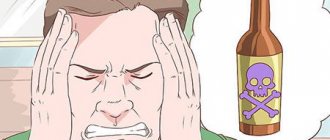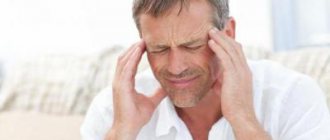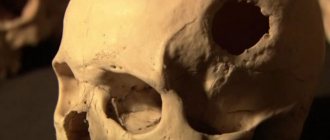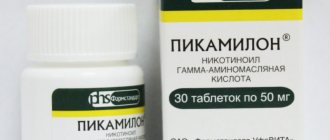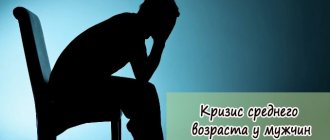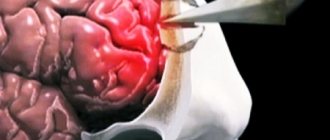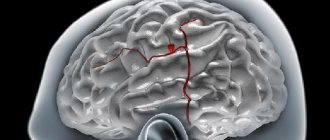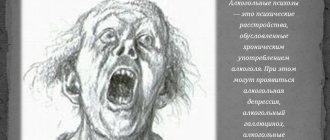People often notice that, in addition to rapid heartbeat and weakness, they experience shortness of breath during VSD. This symptom brings discomfort to the patient and leads to a state of panic, which makes it difficult to lead a normal lifestyle. Rapid and difficult breathing may be accompanied by pain. If a pathological condition occurs, a person needs to consult a doctor.
Is it possible to diagnose yourself and how to do it?
Shortness of breath with VSD is characterized by symptoms such as increased breathing, pain in the chest area, muscle spasms, and dizziness. If you have respiratory problems, it is recommended to consult a specialist. There is no need to try to diagnose yourself. The patient needs to visit a therapist and specialized specialists: a neurologist, an endocrinologist, an otolaryngologist. In some cases, the following diagnostic methods are used:
- Ultrasound examination of internal organs.
- X-rays of light.
The diagnosis is usually confirmed by a neurologist. The specialist prescribes appropriate treatment for the patient.
Diagnosis and treatment
The difficulty of making a diagnosis is dangerous because the wrong treatment regimen may be prescribed, completely unsuitable for the patient. Such therapy can cause even greater complications. Diagnosis of VSD is difficult due to the fact that the disease has a wide range of different symptoms.
The lack of clear indicators requires differential research methods. The same applies to such a symptom as hyperventilation. It was stated above that such a symptom can manifest itself in many disorders in the internal organs. Differential diagnosis should exclude the presence of organic pathology (damage to the respiratory system, heart, thyroid gland, brain). For this purpose, the patient is advised to undergo consultations with a neurologist, endocrinologist, cardiologist, and pulmonologist.
When compiling an anamnesis, attention should be paid to the patient's genetic background. It is possible that immediate relatives exhibited dysfunction of the autonomic nervous system. In children with VSD, the medical history is often aggravated by unfavorable intrauterine development and the presence of viral diseases or acute and chronic focal infections.
When identifying a pathology such as vegetative-vascular dystonia, an assessment of the initial autonomic tone and indicators of the reactivity of the nervous system is required.
The initial condition can be assessed based on the patient's subjective complaints. As for the treatment of attacks of lack of air, the main link is to eliminate the psychological basis of the disease. For this purpose, the following are widely used:
psychotherapeutic conversations;
- meditation;
- auto-training.
Eliminating shortness of breath involves complex treatment, which includes:
- attending psychotherapist sessions;
- taking sedatives (Valerian, Motherwort, Novo-Passit, Sedafiton)
- taking antidepressants (Amitriptyline, Paroxetine);
- saturating the body with essential substances such as potassium, calcium, magnesium, vitamin B6 and vitamin D
To relieve the feeling of lack of air during a crisis, the level of carbon dioxide in the inhaled air should be increased. For this purpose, it is advised to breathe into folded palms or any bag. Carbon dioxide levels increase, blood vessels dilate, and breathing rate decreases.
When treating panic attacks, techniques such as breathing exercises and various inhalations do not bring results, since the structure of the respiratory organs is not affected. The functionality of the bronchi and lungs is not impaired, which cannot be said about the nervous system, which suffers from a neurotic disorder.
An obstacle to rational therapy may be the patient's reluctance to admit the presence of a functional lesion of the nervous system. A person does not stop looking for non-existent diseases, changing one doctor's office after another in search of a serious organic pathology. In this case, rational therapy is difficult.
Difficulty breathing with VSD, causes
Many people are concerned about the question: why is it difficult to breathe during VSD? Vegetovascular dystonia (VSD) is a syndrome caused by a functional disorder of the autonomic nervous system (VNS), characterized by nonspecific symptoms from the following organ systems:
- cardiovascular system (pain in the heart (cardialgia), pathologically high or low blood pressure, tachycardia);
- respiratory system (shortness of breath, respiratory arrest);
- digestive system (stool disorders, flatulence, abdominal pain);
- nervous system (sleep disorders, thought processes).
What are the causes of difficulty breathing during VSD?
The balance between breathing and the speed of blood flow in the lungs is disrupted. In this case, carbon dioxide passes into the lumen of the alveoli without accumulating in the blood. Its deficiency occurs, and a reflex reaction of narrowing the lumen of blood vessels is triggered, which is why there is a lack of air during VSD. At a certain moment, a panic attack occurs, breathing begins to stop, and suffocation occurs.
Why suffocation may occur
Shortness of breath can also occur normally, as a compensatory reaction. During physical activity, more oxygen is required than at rest.
The breathing process is autonomous and does not need to be consciously controlled. It is carried out due to the hierarchically ordered mechanisms of the autonomic nervous system. Neurocirculatory dystonia provokes an increase in the frequency of respiratory movements at different levels of regulation.
Shortness of breath can be caused by a disorder at any level of regulation: central, conduction pathways or peripheral. Lack of air during VSD can only be a subjective phenomenon that arises against the background of a malfunction of the autonomic nervous system.
Lack of air and a feeling of suffocation are the main manifestations of vegetative-vascular dystonia with respiratory syndrome. In this case, the process of hyperventilation of the lungs occurs. It consists of increasing the airiness of the lung tissue due to rapid or deep breathing.
The lungs are overfilled with oxygen, but there is not enough carbon dioxide, which also takes part in the breathing process. Carbon dioxide irritates the respiratory center in the brain. Therefore, when it is deficient, the nervous regulation of the breathing process is disrupted.
Such breathing can occur as a result of a panic attack, which can often be observed with VSD. The main cause of difficulty breathing during VSD is neurotic. There is no somatic pathology that could cause shortness of breath or suffocation in this case.
Any conflict situation, positive or negative stress, or overwork can be a provoking factor for the appearance of hyperventilation syndrome.
Choking in this case is not a consequence of a disease of the internal organs - heart, lungs, endocrine glands. Another psychological aspect that may result in shortness of breath is unconscious copying.
This is observed in people with increased impressionability. If at some point in their life they saw a person suffocating, they can copy this state on a subconscious level. Although they have no real reasons for suffocation.
The essence of the symptom of suffocation is a vicious circle. When experiencing emotional disturbances, a person with vegetative-vascular dystonia reflexively quickens their breathing. Due to this, the lungs are filled with oxygen above normal.
Causes of lack of air during VSD, mechanism of shortness of breath
The mechanism of shortness of breath with vegetative-vascular dystonia is quite simple. Most often, the cause of an attack is a surge of emotions (fear, anxiety), as a result, hormones penetrate the circulatory system. They affect the heart rate and the depth of inspiration. Rapid breathing in this case is the body’s reaction to a violent outburst of emotions.
There is an imbalance of carbon dioxide and oxygen in the patient's body. Despite the fact that the alarm was in vain, the process can no longer be stopped. Rapid breathing promotes the active removal of carbon dioxide from the body. As a result, the vessels begin to narrow. This allows you to compensate for the lack of carbon dioxide.
When shortness of breath occurs due to vegetative-vascular dystonia, certain changes occur in the patient’s body. You can read about them in table No. 4.
| Adverse changes | Their description |
| The appearance of changes in the composition of the blood | Blood acidity levels undergo changes. With rapid breathing, the level of carbonic acid in the body can decrease. |
| Problems with the cardiovascular system | With shortness of breath due to vegetative-vascular dystonia, the level of magnesium and calcium in the blood changes. The cardiovascular system suffers from this. The patient may experience the following symptoms: a feeling of pressure in the chest, trembling in the limbs. |
In order to prevent the occurrence of complications, it is necessary to promptly treat vegetative-vascular dystonia. Otherwise, a person experiences problems with blood circulation in the brain, and pathologies of the cardiovascular or digestive systems develop.
In order to reduce the likelihood of shortness of breath during VSD, you need to eat right. The daily menu must include foods rich in minerals and vitamins. A person should stop drinking alcoholic beverages, pickled vegetables, spices and savory seasonings. You need to develop the ability to control negative emotions.
Obvious features of an attack of shortness of breath are:
- short duration;
- stress component;
- fear for one's own life;
- depressed mood;
- instability of emotions.
The mechanism of air shortage during VSD is carried out as follows:
- First, a trigger occurs when there is a sharp increase in emotions, contributing to the release of hormones into the blood. In response to this process, the pulse accelerates, blood vessels constrict, and breathing becomes more frequent. With the help of this process, the human body prepares for the effects of stress.
- Next, an imbalance in the amount of carbon dioxide and oxygen occurs: despite the fact that the body understands the falsehood of the alarm, all processes continue to form. Frequent breathing causes discomfort in the chest; with its help, excess carbon dioxide is removed from the body. The required amount of air (oxygen) is observed, but it does not enter the brain through the bloodstream due to the fact that the vessels are in spasm.
- Disorder in the functioning of human body systems: manifested by the demand for a high amount of oxygen by the brain, which is not supplied. The nervous system starts the functioning of the respiratory organs, but they do not cope with the task, because the cause is not in them, but in the vessels. In this case, there is a sharp increase in breathing with the simultaneous development of panic.
To summarize, it can be noted that the causes of suffocation lie in the imbalance of the systems of the human body, their misinformation and inability to work harmoniously.
After eating I feel out of breath
Hello! Can you consider the problem of difficulty breathing. I am 21 years old, but recently I have started to have trouble breathing after eating. And this is not because I overeat, but it just happens that you sit down at the table for dinner, literally eat a little and it’s already hard to breathe. I can’t breathe, as if I don’t have enough air, I feel like I’m yawning, I need to get up and walk around. After this, you seem to be able to breathe. But after a short period of time, the need to breathe again arises and again it doesn’t work. After eating, apparently when it is digested, this discomfort goes away and I begin to breathe well again. But I must say that this does not happen at every meal, but quite often. With what it can be connected? I used to have the same cases, but not at the time of eating, but they were very rare. Please consider this topic. Thank you.
Formally, the symptom of difficulty breathing may be a sign of severe organic diseases of the blood vessels or lungs, so it is advisable to conduct a minimum of research: fluorography, ECG, general blood and urine tests. Go see a therapist. If everything is normal there, then this syndrome of difficulty breathing can be associated with the manifestation of vegetative-vascular dystonia.
Just for fun, I typed “difficulty breathing” into a search engine and was surprised at the huge number of sites that connect this problem with the psyche. Difficulty breathing is like... panic attacks, phobias. which do not need to be treated, and just go away. The main medicine is valerian, etc. Rave!
Considering your age and the circumstances of the problem, you can think about a banal redistribution of blood flow, a change in the biochemistry, composition and quality of the blood, which changes in response to digestive processes and affects the ability of the blood to deliver oxygen to brain cells. This will already be a physiological reason that arouses panic in the brain and triggers the release of stress hormones.
It is not necessary to fight stress, but to stabilize the circulatory system. Let me explain: as soon as a person begins to eat, the autonomic nervous system increases blood circulation in the organs of the gastrointestinal tract. If you have been dehydrated for a long time and have a reduced blood volume, then a deficiency of normal blood circulation in the brain may occur, since most of the blood will now flow into the abdominal cavity. Even the blood flow to the lungs decreases, which leads to decreased oxygen saturation in the blood.
In addition, the stomach must create a certain amount of gastric juice to digest food, and this is from 2 to 5 liters per day. To produce gastric juice, you need to get water from somewhere. Usually tissue fluid, lymph, is used. But, if there is no supply of intercellular fluid, then water is taken from the blood plasma. And this will directly cause a decrease in blood volume and its thickening - this is another reason for disruption of oxygen metabolism, that is, for difficulty breathing. I'm willing to bet that you have an asthenic body type, since you do not have a supply of intercellular water.
There are other factors that can lead to blood thickening. After eating, carbohydrates begin to be absorbed almost immediately, the level of glucose in the blood rises, and after a while fats begin to be absorbed, which in due time thicken the blood plasma and can impede capillary blood flow.
The chemical composition of food also plays an important role. Boiled food and refined products strongly alkalize the blood, which leads to crystallization of calcium in the blood plasma, that is, to thickening of the blood. Raw plant foods and acidic foods, on the contrary, will thin the blood and improve blood circulation.
You are exactly describing the signs of lack of oxygen: it’s hard to breathe, it’s hard to breathe, there’s not enough air, you want to yawn, you need to get up and walk around. By the way, if you start loading the muscles of your legs and pelvis (walking, squats), then you increase your circulating blood volume. When sitting without moving, approximately 1/3 of your blood volume stagnates in the lower half of your torso. When you start walking, your blood volume increases by a third.
And also, when the muscles begin to work, they produce lactic acid, and additional lactic acid begins to enter the blood, which thins the blood plasma, dissolves calcium and helps the utilization of carbohydrates and fats. That is, the training process thins the blood and improves blood supply to the brain.
The way out of the situation is quite simple. 1. Drink plenty of plain, high-quality water throughout the day, especially before meals. At least 1.5 liters per day, more is possible, but it depends on your weight. 2. Don't forget about salt. A pinch of salt on the tongue before meals significantly increases the production of gastric juice and stomach acidity. Salt increases the supply of intercellular water. 3. Avoid eating sweets (refined white sugar) and starchy foods (premium white flour). If possible, replace with products made from rye or oatmeal; you can also use honey. Avoid fruit juices, especially store-bought ones: they contain a lot of sugar and all sorts of chemicals. 4. Reduce your meat intake. For the first 3 weeks, you can completely give up meat. 5. Give up cottage cheese forever. 6. A simple method of acidifying your blood can help you improve blood circulation in your brain. Apple cider vinegar 1 tsp. for 1 glass of water, drink 3 times a day.
Your food is raw vegetables, greens, all cereals except semolina, green varieties of fruit, berries, unroasted nuts and seeds. Drinks - kvass, compote, jelly, fruit or herbal teas. vegetable juices. Lean boiled meat or steamed cutlets no more than 2-3 times a week. Sauerkraut juice can have a strong healing effect; you can drink 1/2 glass before each meal. Or drink kumiss, or ayran (tan). Any water procedures also help stabilize the circulatory system: dousing, bathing, daily foot baths.
I probably need to go to the doctor. What if I have bronchospasm, for example? It’s scary.
What does bronchospasm mean?
Maybe this is some kind of allergic reaction, for example perfume, cologne, something new that has recently appeared in everyday life.
no, it’s in different places, not just at home.
that you eat too quickly and too much, don’t be offended
No, Natasha. This has been going on for about a year and a half now. I tried “every speed.”
The effect is the same.
and you endure this for a year and a half?
and still haven't seen a doctor. well people.
Bronchospasm is a narrowing of the lumen in the bronchi and, since the paths through which air enters the lungs are sharply narrowed, suffocation occurs (of varying degrees). An interesting reaction to food.
There may be an option: a feeling of a lump behind the sternum that does not allow you to breathe deeply - as one of the signs of a hiatal hernia. and yet it can provoke attacks of bronchial asthma with the same bronchospasm. first, do an FGDS, rule out a problem with the esophagus = - it’s much easier than dealing with some hypothetical bronchospasm
I asked here already, but did not receive a decent answer. Therefore I will repeat.
Male, 41 years old, 186 cm, 93 kg. I don’t smoke, alcohol about once a week, no more than 300 grams of vodka or whiskey with a hearty snack. There is almost no physical activity - exercise 3-4 times a week and a couple of kilometers. on the day of walking.
Recently I began to notice that I feel bad after eating - there is a lack of air, breathing slows down and becomes shallow, and there is a desire to control the respiratory process. All this appears in a paroxysmal manner, with panic reactions, just a feeling that everything is over, usually in a sitting position (lying down after 5-10 minutes, everything goes away). Also, at the same time, slight dizziness occurs, darkness obscures the eyes, and unpleasant sensations in the heart area (although I may be imagining this). Most often, this happens with a hangover; if physical activity is high, then everything is fine, it practically does not appear. At the same time, the pressure remains almost normal, well, maybe it drops slightly: lion. hand 122/82, right. hand 107/78 (usually I have up to 130).
I went to see a cardiologist and prescribed some medications to boost the sympathetic system (or something like that). Haven't drunk yet.
Question: what is it? Why after eating? Isn't it dangerous? Could this be related to taking Carvalol or Valocordin, since when I have a hangover I prefer to drink 20-30 drops a couple of times?
The second doctor prescribed: Metozok, Predizin, Erinit, Azafen, Grandaxin. Didn't make a diagnosis.
I'm taking it for the second week and there's no significant improvement. Yesterday and the day before yesterday it was good, but today I have attacks again: slight lack of air, compression in the heart area, severe ringing in the ears, cold extremities, some kind of fogginess, slight spasms in the head. Again, more often after meals.
But in principle I don’t feel so bad - I work at the computer, drive, and have a good appetite.
Pressure 120-115 / 70-65. The pulse is very rare 51-59, but maybe this is thanks to Metozok.
Is it really because of the heart? How is ischemia or atherosclerosis generally diagnosed? Can these diseases be cured?
Thank you Mikhail Yurievich. I'll do a load test on Monday.
As for the panic attack, I read it on Wikipedia ([Only registered and activated users can see links] 0%B0%D1%8F_%D0%B0%D1%82%D0%B0%D0%BA%D0%B0), it’s very similar - out of 14 symptoms, at least 10 are mine. But there is nothing there about treatment. Antidepressants? I’m taking Azafen now and it feels better.
I'm already exhausted. Really terrible conditions.
Husband, 42 years old, 5 kg overweight, low physical fitness. active, don’t smoke, alcohol in moderation, little stress.
Among the constant symptoms: - feeling of lack of air, forced breathing - noise, ringing in the ears, - feeling of heaviness in the chest, as if a foreign body is propping up from below - numbness in the limbs - sweating
Among the attacks that occur during attacks: - suffocation, panic - blurred vision, blurred vision - slight dizziness - you want to move, knock over something, hit - incoherent speech
Usually occurs in a sitting position, more often with a hangover. I lie down and it gradually goes away. When moving, working, being active, they disappear altogether.
The dynamics are getting worse. Appeared six months ago.
I visited a therapist, a gastroenterologist (suddenly the pancreas reacts like this), a cardiologist, a neurologist - no one really makes a diagnosis.
Can anyone advise what this could be? How to exclude any pre-stroke conditions, oncology?
Thank you Tatyana Genrikhovna. That’s why I’m asking about a panic attack - 90% of the symptoms are similar. It’s difficult to pass tests in the current state - my thoughts are confused, I read slowly, I have difficulty thinking - an hour ago I had a severe attack, I kicked the chair so hard that I broke my nail and started bleeding. And I mostly lie there. It's inconvenient for an iPad to pass JavaScript tests.
It is important for me to rule out other diseases. A panic attack in itself, as I understand it, is not terrible. I’m afraid of all sorts of strokes, etc. But the pressure during attacks is usually normal 125/70
I can give a bunch of different symptoms. For example, twitching in different places, appeared six months ago. Or difficulty swallowing - fear of choking. None of this ever happened.
I was flying the other day, and on both flights I almost tore the armrests off the seat.
Now I drank a couple of glasses of cognac, I feel a little better, but the tinnitus is strong.
Sergey Ivanovich, thank you. I’m asking about oncology because the statistics on cancer in our city are very high. Well, these strange symptoms that appeared out of nowhere six months ago.
- some kind of internal trembling throughout the body, very small and unnoticeable - nervous mini-tremors, when one muscle begins to twitch, then another - mild temperature, or rather body heat, which is not registered by a thermometer, but I feel it and so does my wife
There are also such important characteristics, will they help diagnose the disease: - usually attacks appear in the afternoon, from about 15.00 to 18.00 - usually in a sitting position, lying down, they pass, and if you are actively engaged in something, they do not occur at all
And another interesting observation. Attacks appeared against the backdrop of yoga classes. I was actively involved in my youth and six months ago I returned to asanas and pranayama, could this have had any effect?
I made an appointment with a psychotherapist for September. And this is a paid doctor. Maybe you can recommend some mild anti-depressants right now? Otherwise, waiting 3 weeks is a very long time.
Once I was diagnosed with Arnold-Chiari malformation, grade I. Offset 5 mm.
Recently I have been experiencing the following symptoms:
1. Sudden attacks of fear, suffocation, confusion. Especially often after eating, while sitting. If you lie down, it gradually becomes easier. With a hangover the intensity is greater. At the same time, slight defocus, slight dizziness. Sometimes the same thing happens during physical education. Sometimes apnea attacks before falling asleep.
2. Heaviness, pressure in the chest area, above the heart. Lump in the throat. Some kind of sudden arrhythmia.
3. Twitching in different places of the body. Like a nervous tic. Quite strong and frequent.
All this appeared about six months ago. At first the attacks were very sharp, I simply went crazy from the fear of death. Now I’ve gotten used to it, the intensity has subsided, but everything continues regularly.
Could this be due to an anomaly? If not, what could be the reason?
Strange things are happening to me. Two dozen doctors of various specializations (pediatricians, neurologists, oncologists, cardiologists, gastroenterologists, otolaryngologists, endocrinologists, psychologists), not the top ones, but not the last ones either. Two dozen tests.
And no disease is found. They are babbling something about vegetative-vascular dystonia. They prescribe anti-depressants, like I’m making this all up, but they don’t help. I continue to experience very unpleasant symptoms.
Maybe you can tell me: 1. Regularly, every day, I experience unpleasant sensations in the neck and throat area. Feeling of squeezing of the throat, a lump in the throat, difficulty breathing, almost suffocation, lightheadedness. Previously, there were sharp attacks, but now there is a dull crush in the throat. There is not enough air - both at rest and during physical activity (the latter is even easier to tolerate). In general, pressure and heaviness in the upper chest. Usually after a meal. At the same time, the ringing in the ears, which appeared 3 years ago, intensifies and changes the range or frequency.
2. Unpleasant sensations in the heart area: pressure from below, sometimes fluttering. Sudden strong single knocks. Sometimes shortness of breath, especially with a hangover.
3. Slight dizziness, panic. At the same time, my vision darkens, I slightly lose orientation and the ability to communicate adequately.
4. Sleep apnea is common. At the moment I fall asleep, I will definitely scream a couple of times because I am suffocating.
5. Various other minor symptoms such as numbness of the limbs with uncomfortable sitting/lying. Nervous twitching in different parts of the body.
Normal blood pressure is 125/75. Pulse is also 55-75. Weight is a little overweight - 94 kg with height 187 and age 42 years. The lifestyle is calm and measured.
Subjective symptoms of suffocation
In clinical practice, it is important to be able to distinguish between suffocation in bronchial asthma and VSD. In the first case, the patient cannot inhale, and in the second, he cannot exhale. Choking that occurs with vascular dystonia is characterized by the following subjective symptoms (as perceived by the patient):
- a feeling of “chest corset”, compression from the outside, complicating the breathing process;
- loss of sensation in the fingertips;
- dry cough followed by yawning;
- acute pain in the heart area (cardialgia);
- feeling of a “lump in the throat” interfering with breathing;
- Constant yawning can also impair breathing;
- muscle weakness, dizziness.
Without taking proper measures, prolonged suffocation is dangerous: it can lead to hypoxia and loss of consciousness. Therefore, it is necessary to prevent such a condition.
Does increased CO2 cause suffocation during VSD?
As noted previously, accurate assessment of chronic hyperventilation conditions requires assessment of acid-base status by analyzing blood samples. Very few studies have made this assessment in VSD, and the results have been mixed.
Evidence of chronic hyperventilation using acid-base balance measurements was found in the studies of Gorman and Papp, but not Zandbergen. Studies assessing the end-point effects of PCO2 are more numerous and show differences in baseline levels between patients suffering from VSD compared to patients without panic.
In Papp's study, respiratory psychophysiology was examined in patients with panic disorder. The authors also examined baseline respiratory characteristics between the two groups. They found that baseline final PCO2 levels were significantly lower in sick patients.
Other respiratory parameters (respiratory rate, vital volume and minute ventilation) also showed elevated PCO2 levels in patients.
Ways to combat breathing problems
In critical situations, if the patient has difficulty breathing with diagnosed VSD, and shortness of breath nevertheless turns into an attack of suffocation that threatens his health, it is advisable to use sedative medications. By influencing the nervous system, they help normalize respiratory function and eliminate all dangerous symptoms. However, their action often has side effects and develops only some time after administration, but not immediately.
Experts often use the following drugs from the group of antipsychotics and beta-blockers:
- "Corvalol": a drug combined in its composition that has a sedative, hypnotic, and vasodilator effect. The main component of this drug is phenobarbital, to which some people have contraindications. Therefore, you should consult your doctor before using it yourself. It is produced in the form of bottles. The most correct and optimal dosage in most cases is 35 drops per glass of water.
- "Anaprilin": a beta-blocker that has a pronounced vasodilator effect. Reduces blood pressure, heart rate, stroke volume, while reducing the load on the myocardium and its need for oxygen, which is why the patient’s condition significantly improves. Side effects include a pronounced negative effect on the digestive system. Prescribed before meals in a dosage not exceeding 20 milligrams. Contraindicated in patients suffering from heart failure.
- "Gidazepam": a previously actively used tranquilizer. At the moment, the state registration of this drug has expired and it is not used.
- "Glycine": a drug that improves metabolic chemical processes in brain tissue, thereby providing a sedative effect. It is applied sublingually (sublingually), due to which a quick effect is achieved. Dosage: 2 (for adults) or 1 tablet (for children) 2-3 times a day. It has almost no contraindications or side effects, with the exception of allergic reactions in rare cases. Also, sometimes patients experience nausea and headache due to taking the drug. Along with Corvalol, it is used at moments when the patient may not have enough air.
In the field of traditional medicine, many techniques have been developed to relieve attacks of shortness of breath and suffocation. They are based on the use of drugs based on medicinal herbs, manufactured using various technologies. Medicinal herbal mixtures and mixtures also help. People experiencing shortness of breath due to VSD are advised to drink a cup of hot water infusion of hawthorn or chokeberry in the morning. Since ancient times, tincture of valerian or motherwort has also proven its effectiveness as a sedative.
A simple folk method will help you get rid of shortness of breath, providing a positive therapeutic effect. Make a mixture of the following components:
- finely grated onion;
- granulated sugar;
- beet juice;
- celery juice;
- carrot juice.
The above ingredients are mixed in a ratio of 5:1:1:1:3. 10-15 grams of honey are added to the resulting mixture, then the drug is boiled for 3 hours and taken 3 times a day before meals. This method of treatment is very effective.
Advice! It is important to understand that preparations based on medicinal herbs are considered medicinal treatments, and therefore, before using them, in order to avoid complications, it is recommended to consult a doctor to prevent a negative vegetative-vascular process. If you have difficulty breathing, you can purchase a ticket to a sanatorium.
The patient has to make significant efforts in order to bring his well-being during shortness of breath back to normal. In particular, calm down and switch to normal breathing. The simplest and fastest solution is to take sedatives. As the drug takes effect, the symptoms of suffocation disappear and the sensation of a lump in the throat disappears. But taking medications cannot be a panacea. Each patient must develop his own method of calming himself during attacks.
First of all, it is necessary to find levers of influence on the emotional component of worldview. To do this, it is enough to relax and conduct a short session of self-hypnosis, imagining corners of nature where a person would feel most protected and calm.
Self-hypnosis as a psychotherapeutic technique
Without special training the first time, it is quite difficult to get a positive result from this practice, but if you put in enough effort, getting rid of the anxious state will become much easier.
After this, you need to try to reduce the number of inhalations and exhalations you take. At first glance, it may seem that there is nothing complicated about this.
But in fact, the habit of breathing frequently can prevent you from making significant progress in this exercise. Breathing will constantly shift to its usual rhythm. In this case, experts advise slowing down your inhalation and trying to exhale smoothly. There should then be a pause of two seconds before the next inhalation. But all these efforts will be useless if you fail to shift your attention to the positive moments in life.
Another good way to combat shortness of breath with VSD is swimming. Diving is especially beneficial when you have to hold your breath for a certain period of time. At the same time, the lungs experience a load that is beneficial for them, and the circulatory system also has to work with maximum efficiency.
To treat shortness of breath that occurs with vegetative-vascular dystonia, various medications are actively used. But you shouldn’t count on instant results: most medications begin to act only after 20 minutes.
In order to shorten the duration of an attack of suffocation, you can use Corvalol. If a person has a rapid pulse and shortness of breath, he needs to dilute 30-50 drops of the product in a small amount of liquid.
Table No. 2 shows sedative medications used to eliminate shortness of breath.
| A drug | Optimal dosage | Side effects |
| "Glycesid" | The main active ingredient of the drug is glycine. The product helps cope with feelings of anxiety and eliminates tension. It is recommended to take one tablet of the drug. It should be placed under the tongue. | The appearance of headache, nausea, allergic rash on the body. |
| "Anaprilin" | It is recommended to drink the drug before meals. The optimal dosage should not exceed 20 mg. Anaprilin should not be taken if you are hypersensitive to its components, have low blood pressure, are pregnant, or are breastfeeding. | Dizziness, decreased blood pressure, nausea, vomiting, pain in the stomach. |
| "Gidazepam" | The medicine is endowed with anticonvulsant properties. It helps eliminate anxiety. One tablet of the medicine is taken orally, the tranquilizer must be washed down with a sufficient amount of liquid. The medication should not be taken during pregnancy, breastfeeding, myasthenia gravis, or severe renal impairment. | Weakness, decreased concentration, intestinal disorders, deterioration of erectile function. |
If you have severe shortness of breath, you should not use drugs made from natural ingredients. These sedatives have a weak effect. If you have severe shortness of breath, it is recommended to take sedatives consisting of components of chemical origin.
Dyspnea with vegetative-vascular dystonia must be treated comprehensively. Recommendations that the patient should follow are listed in Table No. 3.
Breathing disorders due to vegetative-vascular dystonia
Breathing disorders with vegetative-vascular dystonia are a common symptom. Attacks often occur during physical exertion, stress, and anxiety. What sensations can a person experience?
- The most common sensation is difficulty breathing; there is a need to inhale air frequently, and to do it as forcefully as possible.
- Choking often occurs, which is similar in initial symptoms to bronchial asthma. In this case, the frequency can increase to 50 breaths per minute.
In addition, a person suffering from the symptoms of vegetative-vascular disease experiences a feeling of a “lump” in the throat, he is tormented by dizziness, and the fear of losing consciousness from lack of air.
All sensations arise during a period of emotional excitement. After a visit to the doctor and examination, no disorder in the bronchi and lungs is detected. That is, the manifestations are psychological in nature.
Causes of difficulty breathing
The breathing process is autonomous, i.e. it does not require conscious control from a person. When the functioning of the autonomic nervous system is disrupted, signs of VSD appear that are not controlled by the person. The source of the problem may be the following reasons:
- intrauterine fetal hypoxia;
- birth injury;
- rapid growth during adolescence;
- traumatic brain injuries;
- heredity;
- stressful situations;
- overwork;
- strong emotional outbursts;
- poor nutrition, causing a lack of magnesium and potassium in the body, etc.
Breathing problems with VSD may be due to a high degree of susceptibility to suggestion. After reading information about a particular disease, a person begins to look for pathology in himself and involuntarily (unconsciously) imitates the signs of the disease.
There is a theory that shortness of breath appears in adults who, as children, often came into contact with people who had difficulty breathing.
It’s hard to breathe with VSD: what to do?
As mentioned above, choking occurs due to cognitive errors rather than physical causes. There is a whole list of methods that will help relieve the VSD crisis:
- Muscle relaxation according to Jacobson;
- Autotraining according to Schultz;
- Slow walking;
- Artificial coughing or yawning (stimulate the vagus nerve);
- “Thought stopping” technique;
- Yoga and meditation.
In many ways, the semiotics of suffocation during VSD depends on the patient’s perception of his illness. During attacks of “choking,” it is not recommended to use medications (tablets, drops) or traditional methods (infusions, herbs). If you constantly swallow pills, addiction will form. This reinforces the patient's belief that he has a physical illness and is capable of suffocating from VSD.
Meditation
The reason for suffocation lies in constant fear. There were no deaths associated with a panic attack. Contrary to popular belief, coma is not caused by attacks of VSD.
Advice! The feeling of “deficiency” of oxygen, tachycardia, and “false” dyspnea are not life-threatening for the patient. Calming down and distracting yourself from the attack is the most effective way to get rid of symptoms. In case of serious overload at work, it is recommended to take a vacation and go to a sanatorium or provide peace for a long time.

